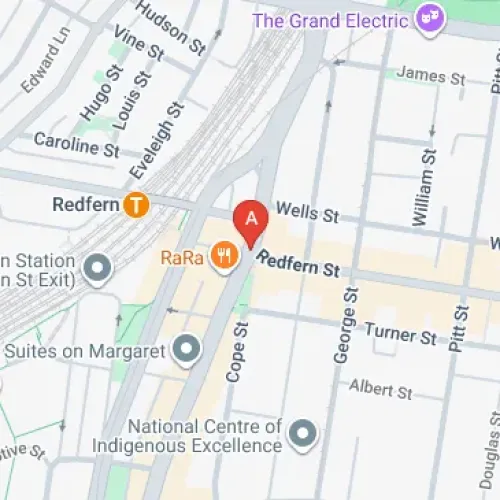How Parking Garages Can Use Google Ads to Get More Customers

In today's digital age, parking garages and car parks need to leverage online advertising to stay competitive and attract more customers. Google Ads offers a powerful platform for parking businesses to reach potential clients at the right time and place. By understanding how to effectively use Google Ads, parking stations can boost their customer base and increase revenue. This article will explore strategies for maximizing the potential of Google Ads in the parking industry, focusing on parking spaces and parking spots. For more insights on how Google Ads can fast-track your parking bookings, visit this guide.
Understanding Google Ads for Parking Businesses
Google Ads operates on a pay-per-click (PPC) model, meaning you only pay when someone clicks on your ad. For parking garages, this presents an opportunity to target customers actively searching for parking solutions. By strategically bidding on relevant keywords, parking operators can ensure their ads appear when potential customers are looking for them. According to WordStream's Google Ads benchmarks, the average click-through rate (CTR) for the automotive industry is 4%, providing a good starting point for campaigns.

Keyword Research: Targeting the Right Customers
Effective keyword research is the foundation of any successful Google Ads campaign. According to CLIQ Marketing Content, "Keyword research for Google Ads involves understanding your business, target audience, and the intent behind their searches." This statement showcases the importance of targeting the right customers.Parking facilities should identify keywords that potential customers are likely to use when searching for parking options. This includes:
- Location-based keywords (e.g., "parking near Sydney Opera House")
- Specific needs (e.g., "airport parking," "cheap parking," "overnight parking")
- Related services (e.g., "car wash and parking," "valet parking")
Using a mix of broad and long-tail keywords can help capture a wider audience while targeting those with specific needs. For instance, consider how data analysts revolutionize parking space management by understanding peak demand and adjusting strategies accordingly.
Crafting Compelling Ad Copy
Once you've identified your keywords, the next step is to create ad copy that grabs attention and encourages clicks. Your ads should:
- Highlight your unique selling points (e.g., competitive pricing, 24/7 security, convenient location)
- Include a clear call to action (e.g., "Book Your Parking Now," "Find Parking Deals")
- Use location extensions to show your parking garage's address and phone number
A well-crafted ad can significantly improve your click-through rate (CTR) and drive more traffic to your website. Ensure your ad copy is relevant to your keywords and landing page to provide a seamless user experience. Search Engine Journal offers valuable tips on writing effective Google Ads copy.

Leveraging Location Targeting
Google Ads allows you to target customers based on their location, which is particularly useful for parking garages. You can set up location targeting to show your ads to people within a specific radius of your
Experience and Expertise in Parking
Sharing customer experiences and leveraging expertise are crucial in the parking industry. For instance, Daniel Battaglia notes in Parking Made Easy: Making Life Easier, "Not finding a parking spot can be a pain, and getting a ticket can ruin your day." This highlights the importance of providing convenient and accessible parking options. Expertise in managing parking spaces can also be enhanced by understanding parking statistics and trends. According to recent research, technology has significantly improved parking efficiency, making it easier for drivers to find and pay for parking spots. As Battaglia also mentions that parking has also changed with how we live, emphasizing the need for adaptable and efficient parking solutions.

Utilizing Ad Extensions
Ad extensions enhance your Google Ads by providing additional information and options for potential customers. For parking operators, useful ad extensions include:
- Sitelink extensions: Link to specific pages on your website, such as booking, pricing, or contact information.
- Call extensions: Display your phone number directly in your ad, making it easy for customers to call you.
- Location extensions: Show your parking garage's address and a map link.
- Price extensions: Highlight your parking rates and any special offers.
These extensions improve the visibility of your ads and provide users with more reasons to click, increasing the likelihood of conversions. They also help you stand out from the competition and provide a better user experience. For example, you could highlight the benefits of offering EV charging through a sitelink extension.
Measuring and Optimizing Your Campaigns
Regularly monitoring and optimizing your Google Ads campaigns is crucial for maximizing your return on investment. Track key metrics such as:
- Click-through rate (CTR)
- Conversion rate (the percentage of clicks that result in bookings or inquiries)
- Cost per acquisition (CPA)
Use this data to identify areas for improvement, such as refining your keywords, adjusting your bids, or tweaking your ad copy. A/B testing different ad variations can also help you determine which messages resonate best with your target audience. Continuous optimization ensures that your Google Ads campaigns remain effective and deliver the best possible results.
![]()
Authoritativeness and Trustworthiness
Highlighting qualifications and partnerships with industry experts or institutions is essential for establishing credibility. For instance, collaborating with data analysts can help parking facilities understand peak demand and adjust strategies accordingly, as discussed in how data analysts revolutionize parking space management. Trustworthiness can be further enhanced by referencing recent parking statistics or research findings. For example, a recent study might highlight the impact of technology on parking efficiency, such as the use of automatic license plate recognition and app-based payments. As noted by the Australian Government Department of Infrastructure, Transport, Regional Development, Communications and the Arts, technology plays a significant role in modern transportation systems, including parking.
Conclusion and Final Thoughts
In conclusion, leveraging Google Ads is a powerful strategy for parking garages and car parks to attract more customers. By focusing on keyword research, crafting compelling ad copy, and utilizing location targeting and ad extensions, operators can significantly improve their online visibility and drive more traffic to their websites. As Daniel Battaglia notes that parking has also changed with how we live, emphasizing the need for adaptable and efficient parking solutions. To stay ahead in the competitive parking market, it's essential to continually refine your Google Ads approach based on performance data and industry trends. Share your experiences with Google Ads in the comments below or sign up for our newsletter to stay updated on the latest parking strategies.
**Written by Daniel Battaglia:** As the author of Parking Made Easy: Making Life Easier is dedicated to making parking easier and more affordable at Parking Made Easy with Generative AI. With a background in business focusing on process improvement and parking solutions, Daniel has dedicated his career to helping drivers find parking. He understands the frustrations of parking and is committed to providing practical solutions. If you have any questions about renting a car parking space, feel free to contact Daniel at daniel@parkingmadeeasy.com.au.


